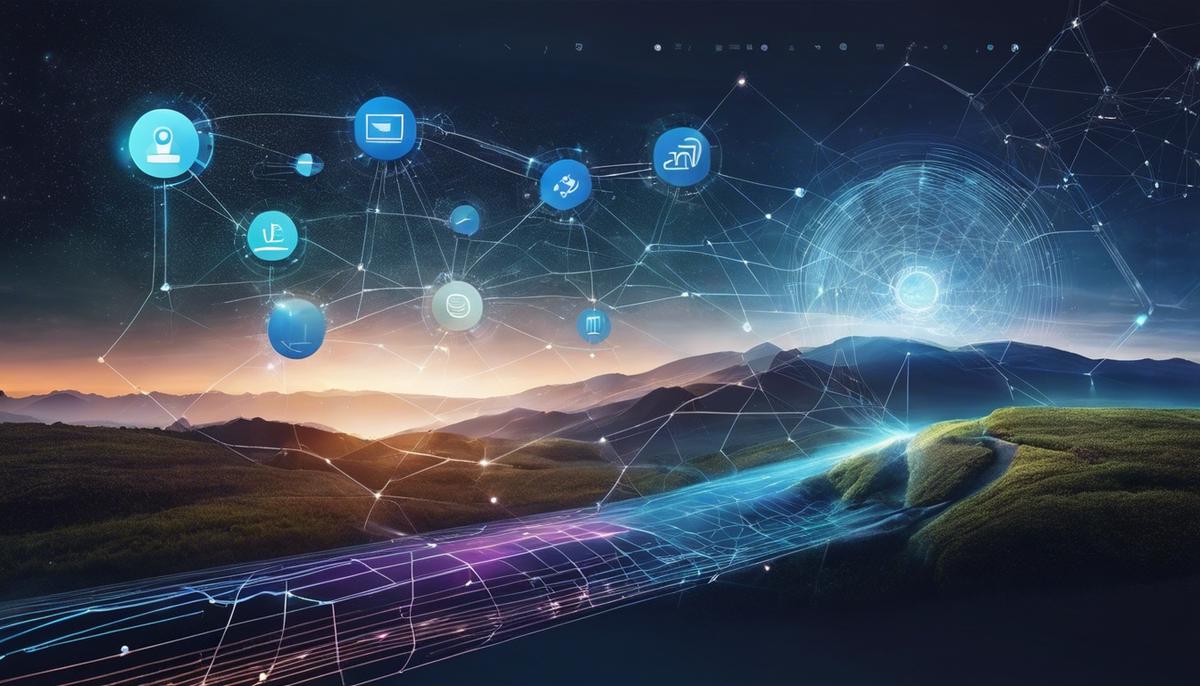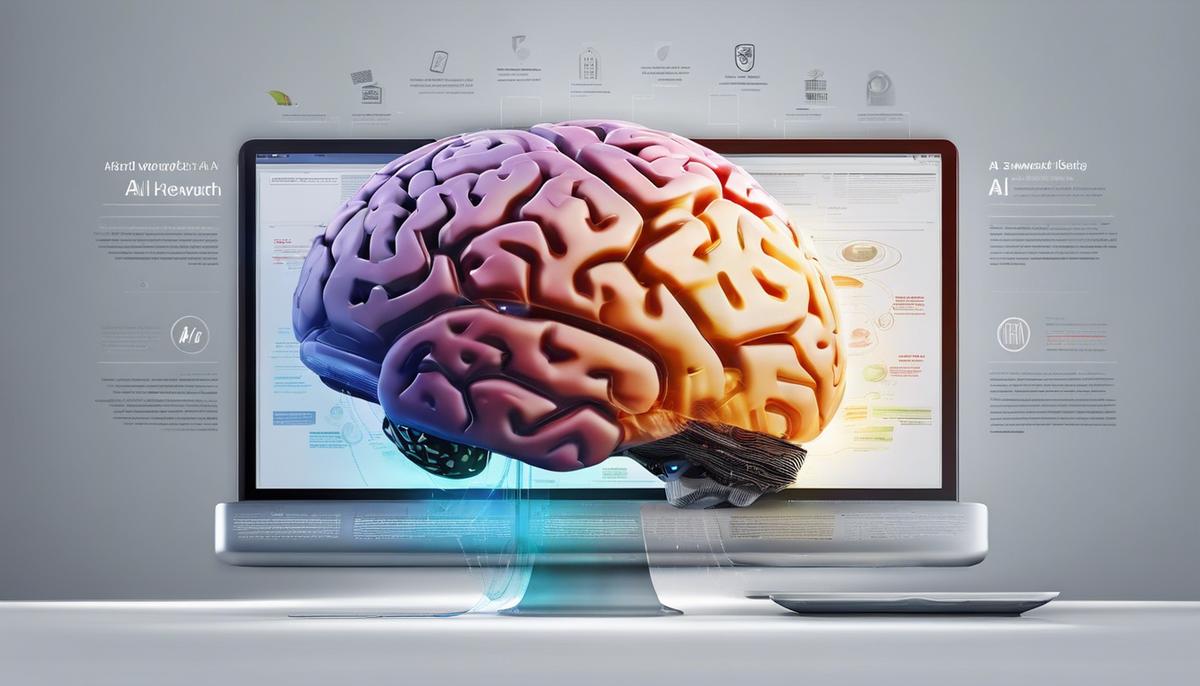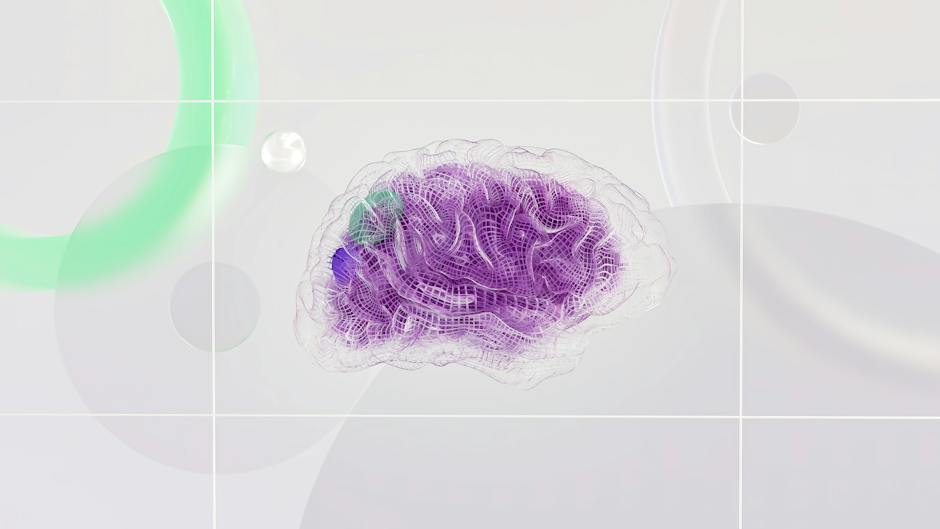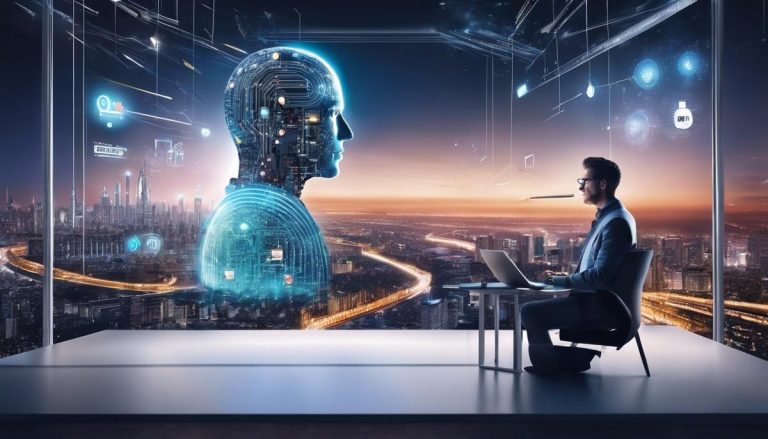As the digital landscape continues to evolve at a blistering pace, the intersection of artificial intelligence and web design emerges as a groundbreaking frontier. The recent proliferation of Automated AI Web Design services is more than a fleeting trend; it promises to redefine the principles of digital aesthetics, functionality, and user experience. From their nascent stages to today’s sophisticated platforms, AI-powered web design tools have surmounted technical challenges to offer seamless and intuitive services that rival the traditional human-led creative process. Whether you’re a seasoned web designer, a savvy business owner, or a curious observer, understanding these technological strides is crucial for navigating the future of online interactions.
The Rise of Automated AI Web Design
Artificial Intelligence: The Game Changer in Web Design
Artificial Intelligence (AI) stands as a revolutionary force in the digital era, steadily transforming how we approach and execute web design. This shift towards AI-driven solutions is reinventing the landscape of website creation, making it more intuitive, efficient, and personalized than ever before.
On the forefront of this transformation is the advent of AI design assistants. These innovative tools can automate various aspects of the web design process, from laying out pages to selecting color schemes. An AI design assistant can quickly generate prototypes, allowing designers to make adjustments on the fly and significantly condensing the development timeline. What once took days now transpires in a matter of hours or even minutes.
Another AI milestone is the emergence of adaptive design elements. These smart components can analyze real-time user data to deliver personalized content and experiences. By tracking visitor interactions, AI algorithms can dynamically adjust aspects of a website to reflect individual preferences and behaviors, vastly improving user engagement and satisfaction.
Content creation is no longer the time-consuming endeavor it once was, thanks to AI’s ability to produce written content tailored to a site’s theme and targeted audience. This functionality extends beyond static webpage content to include custom-tailored product descriptions and blog articles, elevating the relevancy and allure of websites.
Accessibility is another domain where AI is making significant strides. Tools equipped with AI can now audit a website for accessibility compliance, highlight areas that require improvement, and even automatically adjust certain elements to ensure an inclusive experience for users with disabilities. This not only benefits the user but also helps businesses adhere to legal requirements and ethical standards.
Moreover, the role of AI in user experience (UX) cannot be overstated. By analyzing vast datasets encompassing user interactions, AI identifies patterns that reveal what users prefer and which design elements lead to better conversions. Leveraging these insights, web designers can craft layouts and interfaces that resonate with visitors and drive successful outcomes.
In backend operations, AI demonstrates prowess by optimizing website speed and performance. AI algorithms can predict traffic spikes and accordingly distribute server resources, preventing site slowdowns during high-usage periods. On the fly image and content optimization also ensures that sites load quickly, an essential factor in retaining user attention.
As web security concerns mount, AI-powered systems are stepping up to bolster cybersecurity. With the capability to detect and neutralize threats before they escalate, AI-driven security measures provide a robust layer of protection against cyberattacks, safeguarding sensitive data and maintaining uninterrupted service.
The AI-fueled growth in web design is unmistakable, and this is merely an overview of how these technologies are reshaping the field. As AI continues to evolve, it will unlock new possibilities and redefine how we conceive, create, and experience the web. Far from a futuristic dream, AI in web design is here, and it’s paving the way for a smarter, more connected, and user-centric digital world.

Key Features of AI Web Design Services
Harnessing Collaborative Intelligence: AI and Human Expertise in Web Design
Artificial Intelligence (AI) in web design isn’t just about replacing human ingenuity; it’s about augmenting it. Platforms leveraging AI to craft web experiences are becoming increasingly adept at utilizing what could be termed as ‘collaborative intelligence,’ a synergy of automated AI prowess and nuanced human creativity. This convergence is manifesting through sophisticated features on automated AI web design platforms that stand out for their innovation and efficiency.
One such feature is the dynamic template generation. Unlike static templates of yore, AI algorithms now analyze a brand’s digital footprint—its existing content, style preferences, user interactions—and generate website templates that are not only tailored to the brand’s identity but also to the target audience’s browsing behaviors. This ensures that even automated designs have a bespoke quality about them.
Another standout is the iterative design process. AI does not simply produce a single design iteration. Instead, it generates multiple versions, learning from user feedback to refine and evolve over time. This approach mimics the iterative nature of human-led design projects but operates at a significantly accelerated pace.
Real-time device optimization is a further enhancement that can’t be ignored. While traditional responsive design adapts to different screen sizes, AI-powered platforms take it a step further by optimizing websites for a multitude of devices in real-time. This not only covers the variety of screen dimensions but also accounts for different hardware capabilities, ensuring that the web experience is seamless across all devices.
Machine learning also empowers semantic design capabilities on these platforms. Gone are the days of manual keyword insertion for search engine optimization (SEO). AI web design tools now understand context and can autonomously integrate SEO strategies into the design elements, positioning websites for higher search ranking with minimal human input.
Moreover, user behavioral prediction has become a cornerstone for automated platforms. AI-driven data analysis predicts visitor behavior, allowing the platform to adjust design elements proactively for enhanced engagement. This predictive ability can increase conversion rates by guiding visitors along a curated path that’s most likely to result in the desired action, whether it’s making a purchase or signing up for a newsletter.
Beyond the visual aspects, AI systems can implement strategic A/B testing at a scale impossible for human designers to match. Automated platforms run countless tests on design variations, content placement, and call-to-action buttons to determine the most effective layout for user engagement and conversion. The level of granularity here reveals actionable insights leading to data-driven design choices.
Lastly, the integration of Chatbots and AI assistants within web platforms serves as an interactive element that maintains user engagement and provides instant support. Unlike their rule-based predecessors, today’s AI chatbots understand natural language, learning from each interaction to provide more accurate and personalized assistance over time.
These standout features underline not only the present capabilities of AI in web design but also a glimpse into a future where human creativity is not overpowered by machines, but enhanced by them. As AI web design platforms continue to evolve, the ultimate beneficiaries will be brands and consumers who experience more intuitive, responsive, and personalized web journeys. The convergence of automated AI and human expertise in web design is spearheading a new era of digital innovation—a harmonious partnership where technology empowers creativity toward unparalleled digital experiences.

Comparing AI Web Design to Traditional Methods
Harnessing the Power of AI in Website Layout and Aesthetics: A Leap Beyond Traditional Boundaries
Web design, once a playground for creative minds meticulously tweaking every pixel, has embarked on a new era where precision meets efficiency through artificial intelligence. AI web design doesn’t just streamline workflow; it obliterates traditional limitations, redefining aesthetic appeal with mathematical precision.
Among the most groundbreaking advancements is the AI-powered approach to website layout. Programmed to analyze countless design principles, these intelligent systems create aesthetically pleasing arrangements that hold visitors’ attention. The algorithmic understanding of space, alignment, and visual hierarchy enables the generation of layouts that not only look good but are optimized to guide the user’s eye in a predetermined path, subtly steering them towards conversion points without them ever noticing.
This method transcends the subjective nature of human design, where bias and preference can cloud judgment. Instead, AI introduces a data-driven design strategy, effortlessly marrying form with function. By assessing user engagement metrics, AI adapts layouts in real-time, presenting content in the most effective manner, aiming to maximize retention and minimize bounce rates.
Color selection — once a process of trial and error — is now significantly more strategic, thanks to AI’s ability to analyze color theory at scale. It selects palettes based on psychological responses tailored to target demographics, enhancing the emotional appeal and relevance of websites. Unlike the traditional approach, where a designer might rely on intuition, AI quantifies color choices against user data, ensuring each hue contributes to the overarching goal of the website.
Typography is another aspect where AI nudifies traditional methods. Typographic pairings are chosen with precision, pulling from vast databases of fonts to create harmonious, brand-aligned, and readable text arrangements. The result is a cohesive typographic identity that not only conveys brand personality but also ensures legibility on any device. AI algorithms excel at resizing and reformatting text based on screen size and user preferences, a task that often posed challenges for designers adhering to conventional practices.
Imagery and iconography are also prime targets for AI-driven optimization. With access to vast image libraries and the ability to analyze visual content, AI tools generate and suggest images that are contextually relevant and resonating with users. The integration of facial recognition technology further personalizes user interactions with a website, selecting images that reflect the demographics and emotional state of the visitor.
In sum, AI in web design extends well beyond boilerplate automation and rudimentary tasks. It is shaping an approach where beauty and brains are inseparable, where aesthetics are aligned with analytics. This synergy cultivates an online space that is not only visually captivating but also tailored to the user’s subconscious desires, encapsulating a future where design decisions are as much a product of silicon as they are of the soul. Traditional web design may craft a website; AI breathes life into it.

The Future and Ethics of AI in Web Design
Navigating the Ethical Maze: AI’s Role in Web Design Ethics
As artificial intelligence (AI) cements its role within the web design industry, ushering in unparalleled efficiency and innovation, it simultaneously presents a labyrinth of ethical considerations that demand careful navigation. The deployment of AI in web design is not without its share of ethical conundrums, ranging from privacy concerns to questions about the very essence of creativity. This discourse aims to dissect these ethical implications, delving deep into their roots and their potential impact on the industry and society at large.
Privacy Predicament: The AI Surveillance Question
AI-driven web design tools harbor the capacity to collect and analyze vast amounts of user data. While this data fuels the adaptive design elements and personalized user experiences, it straddles the razor-thin line between customization and intrusion. The ethical question that arises asks whether it’s justified to infringe upon user privacy in the pursuit of design perfection, or should boundaries be set to safeguard individual rights? With AI’s pervasive data collection methods, web designers must confront the possibility of contributing to a surveillance landscape, making it imperative to establish stringent data governance protocols.
Creative Integrity: AI and the Human Touch
AI’s prowess in generating written content and aesthetic elements brings forth the debate over the originality and authenticity of creative work. The ability to churn out high volumes of content at breakneck speed and seemingly infinite design iterations can dilute the uniqueness that traditionally defined human artistry. There lies an ethical dilemma in passing off AI-generated creations as human-crafted. The essence of design, once an intimate dance between human cognition and creative expression, now risks becoming a mechanized output devoid of personal touch. The challenge becomes maintaining a balance, where AI aids designers without usurping the very creativity it seeks to enhance.
Accessibility vs. Autonomy: The AI Assistance Paradox
AI tools that audit and ensure compliance with web accessibility standards raise questions about the autonomy of design professionals. While AI assistance in achieving inclusivity is commendable, it may inadvertently erode a designer’s decision-making power. Ethically, it is vital to ascertain whether the reliance on AI auditing tools undermines professional judgment and expertise or whether it serves as a necessary means to an inclusive end. As AI takes on a more significant role in the design process, it is imperative to preserve the integrity of the human decision-maker.
Economic Disruption: AI’s Job Market Impact
An often-discussed ethical implication of AI across industries is the displacement of jobs, and web design is not immune to this phenomenon. As AI becomes adept at automating tasks traditionally performed by human designers, the industry faces a potential shift in employment dynamics. The question then arises: should the push for AI-driven efficiency come at the cost of design-related employment, or is there a moral imperative to balance technological innovation with workforce sustainability? Agencies and designers are grappling with these economic and ethical quandaries as they navigate the AI integration in web design.
In conclusion, the ingress of AI into web design opens a Pandora’s box of ethical considerations that warrant earnest examination. From privacy concerns and the sanctity of creative work to the balancing act of accessibility auditing and the economic ramifications of AI deployment, the field stands at a crossroad. As the tech-driven future unfolds, the stewardship of web design professionals and industry leaders is crucial in guiding the ethical integration of AI, ensuring that while the technology serves to enhance design, it does not overshadow the core human values that underpin the profession.

How to Choose an AI Web Design Service
Selecting the Right AI Web Design Service: Key Considerations
In the dynamic landscape of web design, artificial intelligence (AI) has become a game-changer. With an abundance of AI web design services emerging, it’s crucial to identify the one that aligns with your goals. Here’s a roadmap to navigate the selection process for an AI web design service that can truly elevate your online presence.
Examine Customization Levels
AI might bring automation, but a one-size-fits-all approach doesn’t cut it. The ability to customize templates and design elements to match your brand’s identity is paramount. Scrutinize the extent to which an AI service allows for tailored design solutions, so the end result resonates with your brand’s unique narrative.
Evaluate the Design AI’s Learning Curve
Is the AI web design tool beginner-friendly or does it demand a steep learning curve? The ease of use will significantly impact the efficiency of deploying and maintaining your website. An ideal AI service simplifies complex design tasks without compromising on sophisticated features accessible for those with advanced knowledge.
Assess Data Handling and Analytics
An AI web design service should not just build an attractive site but also one that’s smart. This intelligence hinges on how well the service can leverage data. Does it provide actionable insights, or does it overwhelm you with ambiguous data? The goal is to find a solution that helps make informed design and UX improvements.
Consider Cross-Platform Responsiveness
With the proliferation of devices, your website needs to perform seamlessly across all platforms. An AI web design service should assure intuitive responsiveness, ensuring that layouts adapt fluidly to different screen sizes without human intervention, providing a consistent experience from smartphone to desktop.
Prioritize SEO and Marketing Tools
A beautiful website that doesn’t rank is like a shop without a door. The selected AI web design service should embed SEO features, helping your website to garner visibility in search engine results. Moreover, it should integrate marketing tools that assist in reaching your audience effectively and monitoring campaigns.
Inquire About Support and Community
No technology is devoid of potential hiccups. Evaluate the support structure surrounding the AI web design service. Prompt technical support and an active community for troubleshooting can be the differentiators between a frustrating experience and a successful, hassle-free web design journey.
Inspect Scalability
Your web design needs may evolve over time as your business grows. The service you choose should have the scalability to accommodate increased traffic, more pages, and additional features without necessitating a platform switch, which can be costly and time-consuming.
Check for Collaborative Features
Collaboration begets innovation. A service that offers collaborative features enables real-time communication and project management within teams. This can streamline the web design process, particularly when integrating AI with human creativity.
Reflect on Long-term Costs
Lastly, factor in the total cost of ownership. This isn’t just about the initial fee but also about ongoing expenses such as subscriptions, add-ons, and upgrades. Ensure these align with your budget to avoid future financial strains while maintaining a top-notch website.
Finding the right AI web design service means weighing these considerations carefully, to choose a future-ready platform that not only brings your website to life but ensures that it thrives. With these guidelines, delving into the AI-driven web design realm can be a strategic step towards achieving an online edge.

Implementing AI Web Design in Business Strategies
Crafting a Digital Masterpiece: The Strategic Integration of AI in Web Design for Modern Businesses
The digital landscape is rapidly transforming, and businesses are constantly in search of methods to stay ahead of the curve. One area of innovation is the strategic use of Artificial Intelligence (AI) within web design. Implementing AI isn’t just an upgrade; it’s a complete overhaul of traditional strategies that can herald a new era for a brand’s online presence.
The notion of integrating AI into web design isn’t merely a fanciful idea – it’s a pragmatic step towards harnessing technology for enhanced user engagement and business growth. The key lies in the judicious application of AI tools to complement and augment human creativity. Businesses can thus forge a path toward a digitally intelligent future that aligns with their objectives and user demands.
One underappreciated avenue is the utilization of AI in refining decision-making analytics. By analyzing vast amounts of user data, AI algorithms can spotlight trends and preferences that might elude human designers. Subsequently, design decisions can be data-driven, leading to more targeted and effective user experiences.
Moreover, for businesses concerned with maintaining a robust online presence, AI tools can be indispensable assets. They assist in real-time optimization, taking into account user behavior to fine-tune various design elements – from navigation to content placement. This fluidity ensures that a website remains agile, capable of evolving with its audience’s expectations, without necessitating constant human oversight.
The integration of AI into content management systems (CMS) represents another frontier. AI can oversee the management and distribution of content, pushing relevant material to the forefront at opportune moments. Automation of these processes not only results in efficiency gains but can also lead to higher engagement rates by delivering a tailored content strategy.
Beyond the application of AI in the visible spectrum, back-end optimizations are equally critical for a website’s effectiveness. AI in web hosting environments can proactively identify issues before they become evident to users or escalate into larger disruptions. This seemingly clairvoyant ability to predict and mitigate allows for a seamless user experience – an invisible yet crucial benefit of AI.
In the realm of e-commerce, AI transcends traditional boundaries by personalizing shopping experiences. Machine learning models can recommend products based on user history, nudging customers towards items they’re more likely to purchase. This predictive strategy amplifies sales potential while crafting a shopping experience that feels intimate and customized.
Outfitting a website with AI doesn’t conclude with the deployment of a few algorithms; it’s a continuous journey of refinement. An ongoing relationship with AI service providers ensures that the tools evolve alongside the business, maintaining relevance and efficacy. This relationship often includes regular updates and enhancements, as well as the opportunity for businesses to provide input that directly influences future iterations of the AI tools.
Businesses must recognize that the successful integration of AI in web design is not a destination but a voyage. It requires adaptation, a willingness to embrace change, and a mindset that sees AI not as a replacement but as an extension of human potential. This collaboration between human ingenuity and artificial intelligence is where true digital transformation is sparked, with businesses finding themselves at the forefront of an AI-enhanced digital renaissance.
In conclusion, the integration of AI into web design is a strategic imperative for businesses aiming to thrive in the digital age. It mandates a synergistic approach where technology and human expertise coalesce to unveil the full potential of the web as a business tool. With a deliberate and thoughtful application, AI can elevate a website from a mere digital placeholder to an active participant in a brand’s success story.

Embracing the transformative power of Automated AI Web Design services is not just about harnessing new technology—it is about opening the door to endless possibilities where design meets efficiency, and creativity converges with data-driven precision. As businesses and designers alike chart their course through this dynamic domain, the strategic integration of AI solutions will play a pivotal role in staying competitive and relevant. The synergy between human ingenuity and artificial intelligence holds the promise of a new digital renaissance, where the breadth of web design will only be limited by the imagination. Steering through this exciting journey will undoubtedly shape the digital narratives of tomorrow.




